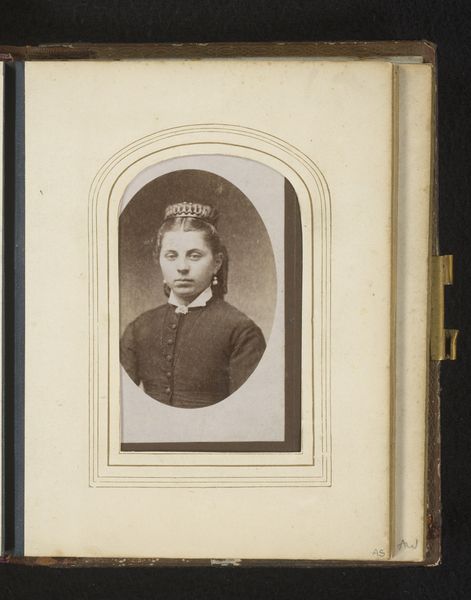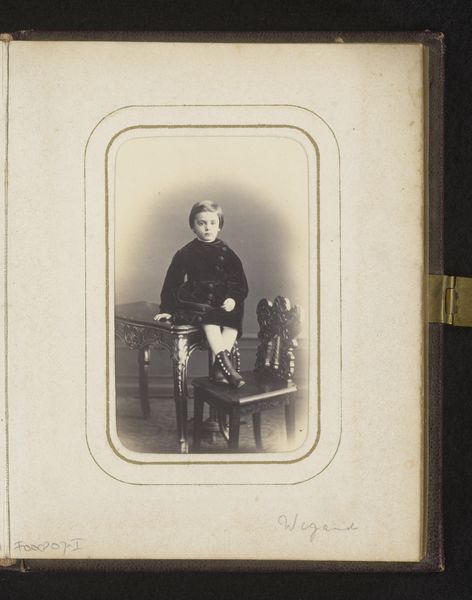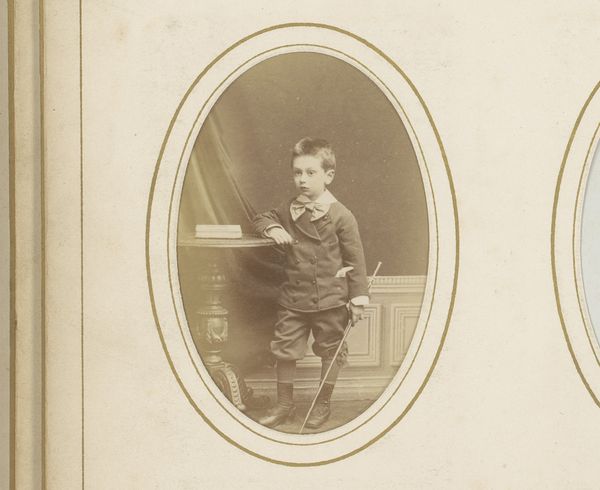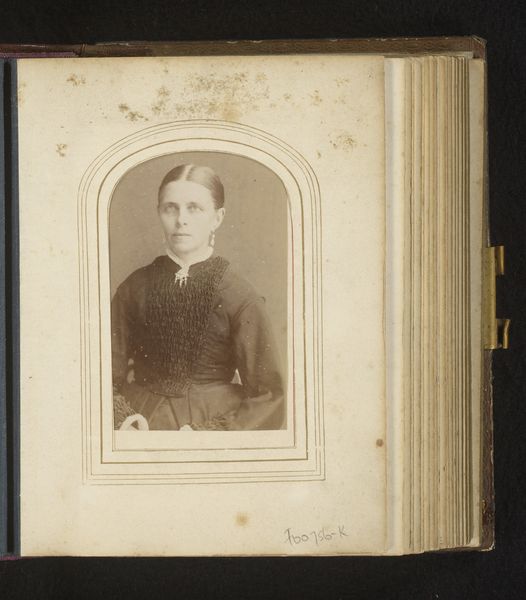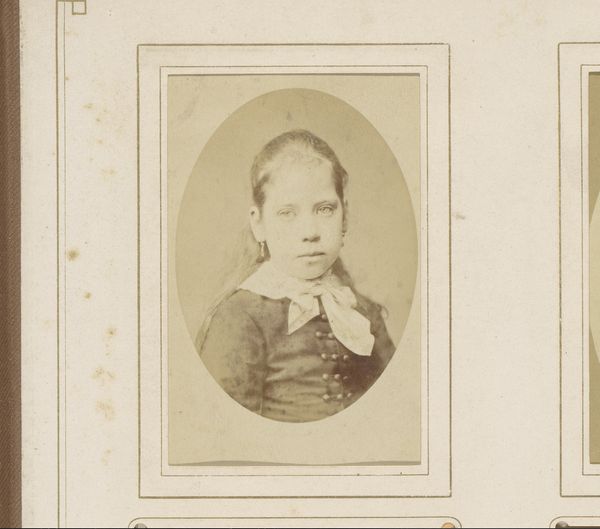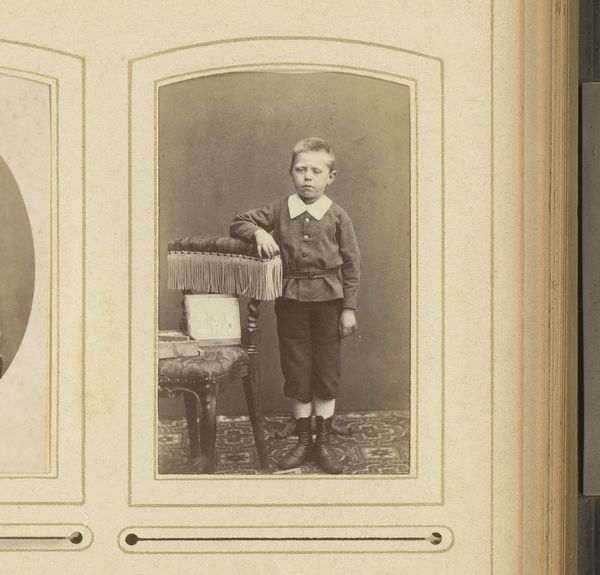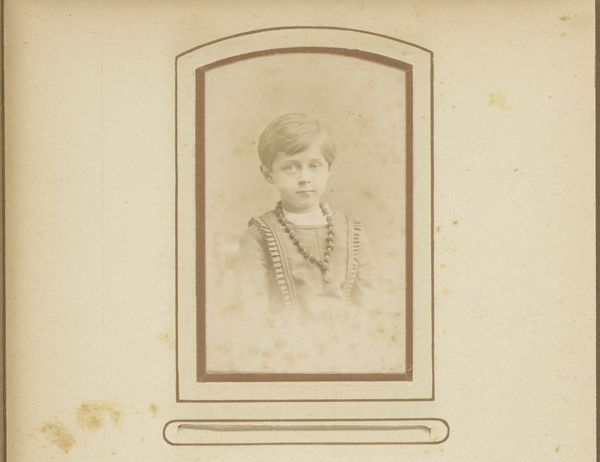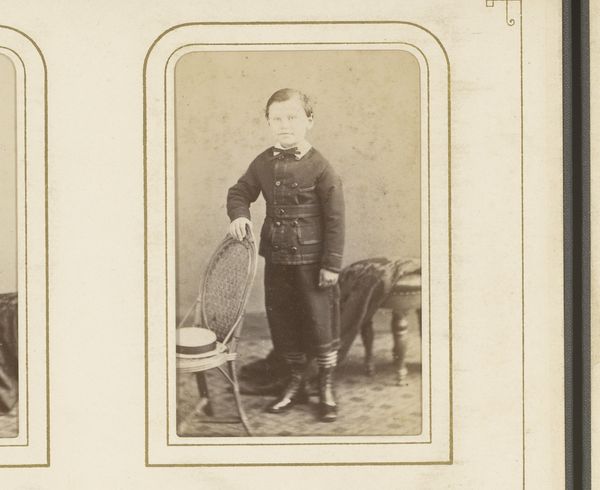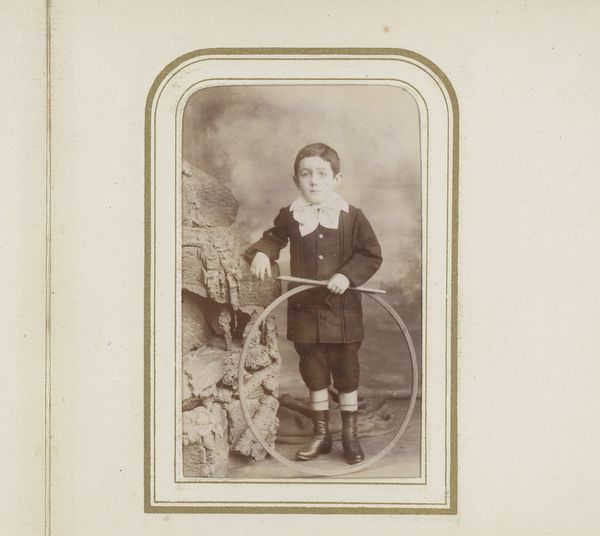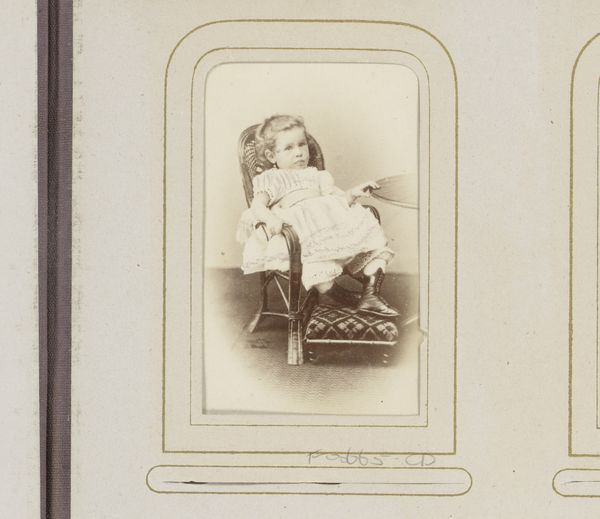
photography
#
portrait
#
photography
#
coloured pencil
#
genre-painting
Dimensions: height 84 mm, width 52 mm
Copyright: Rijks Museum: Open Domain
Editor: So, here we have "Portret van een jongen in uniformjas," created sometime between 1860 and 1900 by Adolphe Legros. It's a photograph, although it almost looks like a drawing to me. The boy’s uniform is quite striking. What's your take on this piece? Curator: Well, considering the period, I immediately think about the means of production. Photography in the mid-19th century was far from the snapshot we know today. Think about the cost of equipment, the chemicals involved, the time it took to create a single image. This wasn't just pointing and shooting. Editor: True, it must have been a much more involved process than just using a camera. Curator: Exactly! And the sitter, posed formally in a uniform. Consider what that uniform represents: social class, possibly military service. The materials signify more than just fabric; they speak of industry, availability, and cultural values concerning appearance. Editor: So, it's not just about the boy, but everything *around* the boy and the process to take this shot. Curator: Precisely. What does the act of creating this photograph tell us about the society of the time? What power dynamics are at play in capturing and preserving this particular image? Editor: I didn’t even consider those things. Now I see it’s about more than just a picture of a boy; it's about a specific cultural moment captured with deliberate intention. Curator: Yes! And understanding the materials and their social context provides insight beyond the surface representation. Editor: I’ll never look at an old photograph the same way again! Thanks for helping me think critically about photography as a material object embedded in a web of social relations!
Comments
No comments
Be the first to comment and join the conversation on the ultimate creative platform.
